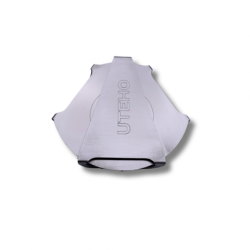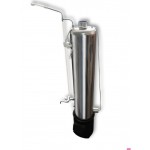
Sterilization Modes in an Autoclave
How to choose the time?
How to choose the temperature?

Autoclaving Products:
Watch the video on temperature and time in the autoclave:
How to Choose the Right Sterilization Mode?
Have you ever faced the question: “How to correctly choose the time and temperature for sterilizing a dish?” In this article, we will uncover the formulas for ideal preservation and provide some useful tips.
The operating modes of the autoclave are based on the combination of temperature and time necessary to destroy bacteria, properly cook, and preserve dishes for long-term storage. It’s important to understand that the time spent in the autoclave at a certain temperature directly affects the quality and safety of the product. Surely, you have noticed that recommendations from different manufacturers and experts may vary. So how do you choose the time and temperature? We explain below.
1. Follow the manufacturer's autoclave recommendations
.png)
2. Consider the type of product
- Meat, fish, legumes require longer sterilization at high temperatures.
- Vegetables and fruits cook faster and at a lower temperature.
- for autoclaves with the thermometer placed at the top of the autoclave - 110°C, 40 min;
- for autoclaves with the thermometer placed at the bottom of the autoclave - 120°C, 40 min;
- for autoclaves with the thermometer placed at the top of the autoclave - 110°C, 30 min;
- for autoclaves with the thermometer placed at the bottom of the autoclave - 120°C, 30 min;
- for autoclaves with the thermometer placed at the top of the autoclave - 100°C, 15 min;
- for autoclaves with the thermometer placed at the bottom of the autoclave - 110°C, 15 min;
.png)
3. Test before full loading
.png)
4. Consider the volume of jars
- Pickled tomatoes in a 1-liter jar sterilize for 5 minutes
- Pickled tomatoes in a 3-liter jar sterilize for 15 minutes
.png)
5. Use Uteho recommendations
- regularly publish new video recipes on our YouTube channel;
- have a section called "Autoclave Recipes" on our website;
- prepared for you the printed “Big Recipe Book” (99 recipes for autoclave: from meat dishes to soups and drinks).
.png)
Why is the temperature in autoclaves with the thermometer placed at the top 110°C for meat, and 120°C for autoclaves with the thermometer placed at the bottom?
.png)
Does the sterilization mode depend on the type of jar?
- Glass jars,
- Tinned cans,
- Retort pouches.
.png)
Do the sterilization modes differ between the steam and water methods?
.png)
What happens if the recommended temperature is not followed?
- A higher temperature may lead to a loss of flavor or even burning of the product.
- A lower temperature – the product will not cook properly, which can cause spoilage of the preservation.
.png)
How not to make a mistake with the autoclaving mode?
The correct choice of sterilization mode is the key to safe and tasty preserves. By following the recommendations, you can easily determine how to choose the required mode and how to cook in an autoclave.
Happy preserving with Uteho!
28.03.2025

Uteho
Don't forget to subscribe to our channel to never miss new interesting videos, get useful autoclaving tips, and discover exciting recipes for the autoclave.









-250x250.webp)




